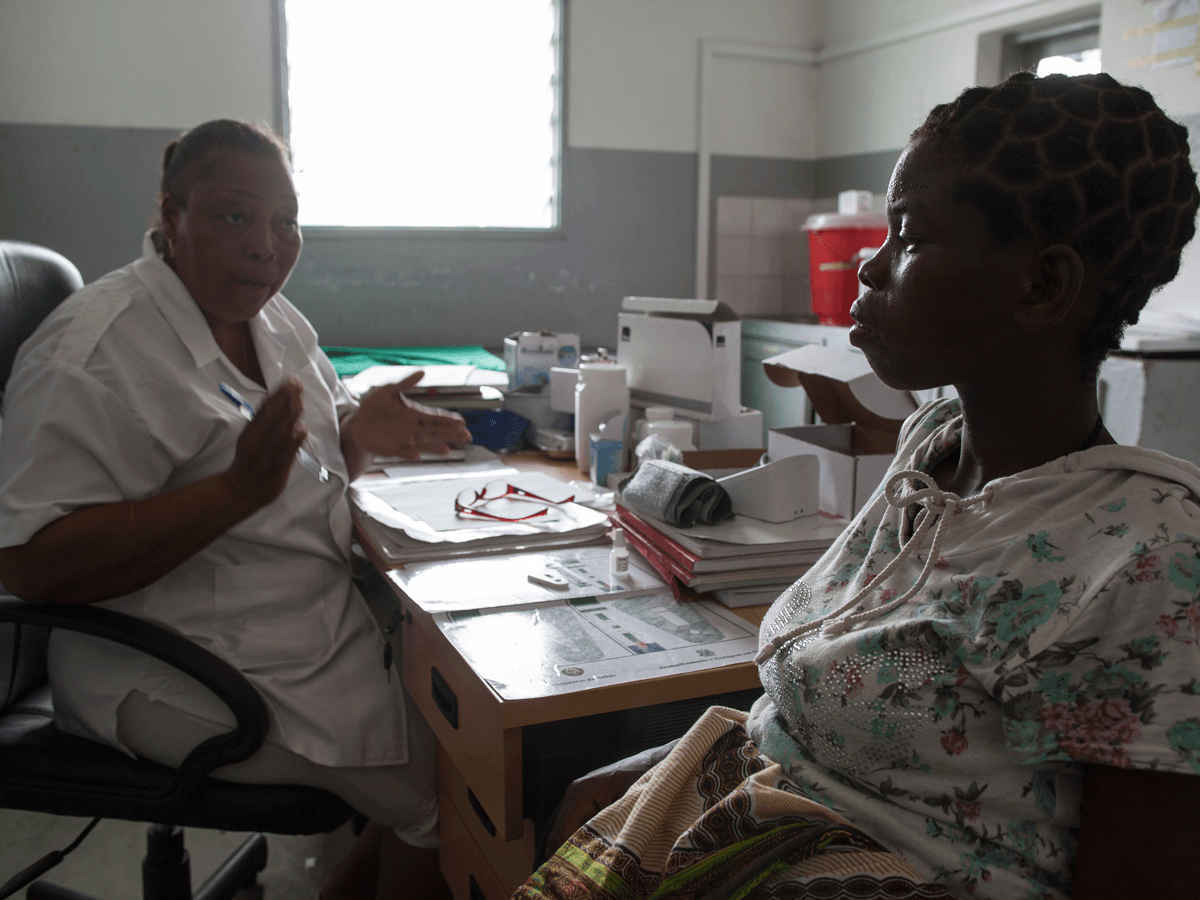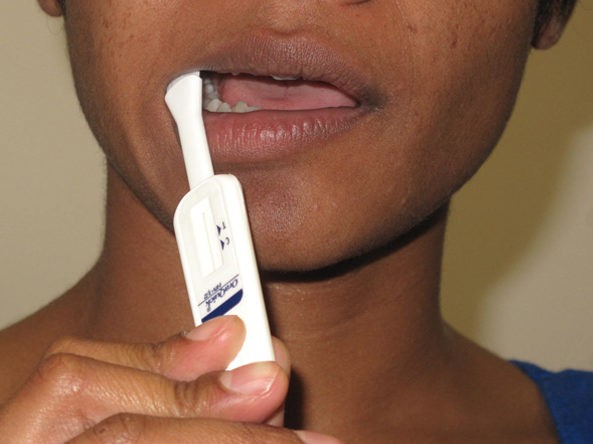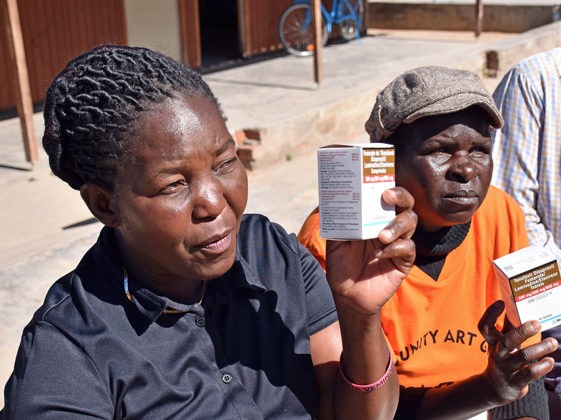Article and Study Summary
Comparative safety of dolutegravir-based or efavirenz-based antiretroviral treatment started during pregnancy in Botswana: An observational study.
Published in:
Lancet Glob Health. 2018; 6: e804–10
http://dx.doi.org/10.1016/S2214-109X(18)30218-3
Authors:
Zash R, Jacobson DL, Diseko M, et al.
Summary:
This article reports on results from the ongoing observational Tsepamo study in Botswana, which compared birth outcomes among women initiating dolutegravir-based antiretroviral therapy (ART) and women initiating efavirenz-based ART during pregnancy. In May 2016, Botswana national guidelines changed from recommending efavirenz-tenofovir-emtricitabine as first-line ART during pregnancy, to recommending dolutegravir-tenofovir-emtricitabine. Birth outcome data, abstracted from obstetric records in eight maternity wards responsible for 45% of all deliveries in the country, were compared for women starting efavirenz-based ART (August 2014 to August 2016) and women starting dolutegravir-based ART (November 2016 to September 2017) during pregnancy. The risks of any adverse birth outcome or severe adverse birth outcome were similar among infants born to women initiating efavirenz-based ART and women initiating dolutegravir-based ART during pregnancy. Women with HIV had a higher risk of adverse birth outcomes compared to HIV-negative women during these time periods, regardless of which ARTregimen was initiated. The results of this study suggest that dolutegravir-based ART can be safely initiated during pregnancy; however, recent data from this study have raised questions about the safety of dolutegravir-based ART at the time of conception.
Discussion Questions:
- How could the results presented in this article inform the use of dolutegravir-based ARTduring pregnancy in the programs that you work with?
- Given the current uncertainty about the safety of dolutegravir at conception, what programmatic challenges do you foresee with implementing a switch to dolutegravir-based ART in your country? Do you have any experiences to share?
Please share your thoughts and experiences with us in the comments section below.
Full Synopsis:
PDF version available in English, French, and Portuguese
Study Summary
This article reports on results from the Tsepamo study, an observational study that used surveillance data to compare birth outcomes among women who initiated dolutegravir-based antiretroviral therapy (ART) and those who initiated efavirenz-based ART during pregnancy in Botswana.
Study Setting
- Eight government maternity wards in Botswana, serving approximately 45% of all births in the country. Two sites were tertiary referral centers, and the remaining six were primary and district hospitals.
- Botswana national HIV treatment guidelines recommended an efavirenz-based ARTregimen (efavirenz-tenofovir-emtricitabine) for adults with CD4 counts <350 cells/microliter and all pregnant women regardless of CD4 count up until May 2016, at which time they were updated to recommend a dolutegravir-based regimen (dolutegravir-tenofovir-emtricitabine) for all adults, including pregnant women.
Methods
- Data were abstracted from obstetric records for all women who delivered liveborn or stillborn infants at 24 weeks’ gestational age or later.
- Analyses included singleton births to women who started dolutegravir-based ARTduring pregnancy and gave birth between November 2016 and September 2017, and to women who started efavirenz-based ART during pregnancy and gave birth between August 2014 and August 2016.
- Births to women who had switched or stopped ART during pregnancy were excluded from analyses.
- Abstracted data included maternal demographics, maternal medical history, routine laboratory test results during pregnancy, maternal diagnoses, medication prescribed during pregnancy, and birth information for the infant, including estimated gestational age. For women found to be living with HIV during pregnancy, information was collected on the timing of HIV diagnosis, CD4 cell count, and history of antiretroviral use.
- The primary outcomes were the combined endpoints of: 1) any adverse outcome (stillbirth, preterm birth, small for gestational age [SGA], or neonatal death); and 2) any severe adverse outcome (stillbirth, very preterm birth, very SGA, or neonatal death).
- Preterm birth was defined as a birth <37 weeks’ gestation and very preterm birth was a birth at <32 weeks’ gestation.
- SGA was defined as less than the tenth percentile and very SGA as less than the third percentile of birthweight by gestational age.
- Secondary endpoints were the individual outcomes of stillbirth, preterm birth, very preterm birth, SGA, very SGA, neonatal death, and major congenital abnormalities.
- The risk of each outcome was compared by ART regimen, adjusting for maternal age, gravidity, and education.
- Secondary analyses compared the risk of outcomes between HIV-positive and HIV-negative women; and assessed for potential temporal changes in birth outcomes between HIV-negative women who delivered during the two ART exposure periods.
Study Population
- Between August 2014 and August 2016, 11,708 women with HIV delivered singletons, of whom 4,593 (39%) began efavirenz-based ART after conception; and between November 2016 and September 2017, 5,418 women with HIV delivered singletons, of whom 1,729 (32%) began dolutegravir-based ART after conception.
- During these two time periods, 51,167 HIV-negative women had a singleton delivery.
- Women on dolutegravir-based ART and efavirenz-based ART were similar in terms of age, parity, socioeconomic indicators, timing of antenatal care initiation, CD4 cell count, and site of delivery.
- Gestational age at ART initiation was earlier for women on dolutegravir-based ART(median 19 weeks, IQR 14–25), compared to efavirenz-based ART (median 21 weeks, IQR 16–27).
- HIV-negative women were more likely to be younger, primiparous, and have higher educational attainment than HIV-positive women.
Primary Outcomes
- Among all women living with HIV, 34.5% (n=2,180) of births resulted in any adverse birth outcome and 11.1% (n=704) in a serious adverse birth outcome.
- The risk of any adverse birth outcome among women initiating dolutegravir-based ARTversus efavirenz-based ART was similar (33.2% vs. 35.0%; adjusted relative risk [aRR] 0.95, 95% confidence interval [CI] 0.88–1.03).
- The risk of any severe birth outcome was also similar between women initiating dolutegravir-based ART versus efavirenz-based ART (10.7% vs. 11.3%; aRR 0.94, 95% CI 0.81–1.11).
- Among HIV-negative women, 28.9% (n=14,766) had any adverse birth outcome, and 9.9% (n=5,085) had a severe adverse birth outcome.
- Compared with HIV-negative women, women with HIV on either dolutegravir-based or efavirenz-based ART had significantly higher risk of any adverse birth outcome (aRR 1.23, 95% CI 1.18–1.28) and any severe adverse birth outcome (aRR 1.16, 95% CI 1.07–1.25).
Secondary Outcomes
- There were no differences in risk of preterm birth, very preterm birth, SGA, very SGA, stillbirth, or neonatal death between women initiating dolutegravir-based ART and women initiating efavirenz-based ART.
- Among 675 women with first-trimester exposure to ART (280 to dolutegravir-based ART and 395 to efavirenz-based ART), one major congenital abnormality occurred (skeletal dysplasia) in an efavirenz-exposed infant.
- Compared with HIV-negative women, women with HIV on either dolutegravir-based or efavirenz-based ART had significantly higher risk of preterm birth (aRR 1.18, 95% CI 1.12–1.25), SGA (aRR 1.30, 95% CI 1.23–1.38), and very SGA (aRR 1.28, 95% CI 1.16–1.42).
- No significant differences were found in risk of very preterm birth, stillbirth, or neonatal death between HIV-negative women and HIV-positive women initiating either dolutegravir-based or efavirenz-based ART during pregnancy.
Critical Analysis
This large observational study from Botswana found that there was no significant difference in adverse birth outcomes among women who initiated a dolutegravir-based ART regimen during pregnancy, compared to women who initiated an efavirenz-based ART regimen during pregnancy. However, compared to HIV-negative women, both groups of women who initiated ART during pregnancy had an increased risk of adverse birth outcomes, particularly preterm birth and low birth weight.
The following points should be considered when interpreting the study findings:
- As an observational study, unmeasured confounding could bias the results. However, birth outcomes did not differ between the two ART exposure time periods among HIV-negative women, suggesting a lack of population-level changes and no differences in case ascertainment over time that would impact the results.
- Increased risks of low birth weight and preterm birth with ART use during pregnancy have been observed previously, with some studies reporting an increased risk of preterm delivery with protease inhibitor-based regimens.1 The reasons for this finding remain unclear, but the benefits of ART during pregnancy are thought to outweigh the risks.
- This study did not evaluate outcomes related to prevention of mother-to-child transmission, early pregnancy loss, or any pediatric outcomes after birth, and evaluation of birth defects was limited to what was apparent upon physical exam at birth.
- Dolutegravir is generally better tolerated than efavirenz; however, women who stopped or switched ART during pregnancy were excluded from this study. Therefore, any benefits of dolutegravir related to tolerability would not have been captured by this analysis.
- Recent data from the Tsepamo study have raised concerns over the safety of dolutegravir at conception.2 The results presented in this article suggest that dolutegravir-based regimens initiated during pregnancy are as safe as the efavirenz-based regimen recommended by the World Health Organization (WHO)3, and no significant congenital abnormalities were found in infants born to women who initiated dolutegravir-based ART after conception.
Implications
This article reports findings from a large, observational, birth surveillance study in Botswana and found that a dolutegravir-based ART regimen is as safe as an efavirenz-based ART regimen when initiated during pregnancy. Dolutegravir-based ART is a preferred first-line regimen for the treatment of HIV in adults because of its efficacy, tolerability, and high barrier to resistance. Previously, safety data in pregnancy have been limited, which has prevented the WHO from recommending dolutegravir-based ART as a first-line ART regimen in pregnancy.3 Importantly, the same study has recently identified a signal that suggests a potential increase in neural tube defects among infants born to women who were on dolutegravir at conception. Additional data will be forthcoming to better inform policy decisions regarding the use of dolutegravir in women of childbearing age, but in the interim, these findings suggest that there is no need to switch regimens in women who are already pregnant and on dolutegravir-based ART.
References
- Saleska JL, Turner AN, Maierhofer C, Clark J, Kwiek JJ. Use of antiretroviral therapy during pregnancy and adverse birth outcomes among women living with HIV-1 in low and middle-income countries: A systematic review. J Acquir Immune Defic Syndr. 2018. Published online ahead of print.
- World Health Organization. Potential safety issue affecting women living with HIVusing dolutegravir at the time of conception. May 18, 2018. Available at:
http://www.who.int/medicines/publications/drugalerts/Statement_on_DTG_18May_2018final.pdf?ua=1 - World Health Organization. Consolidated guidelines on the use of antiretroviral drugs for treating and preventing HIV infection: recommendations for a public health approach. Geneva, Switzerland: WHO; 2016.









